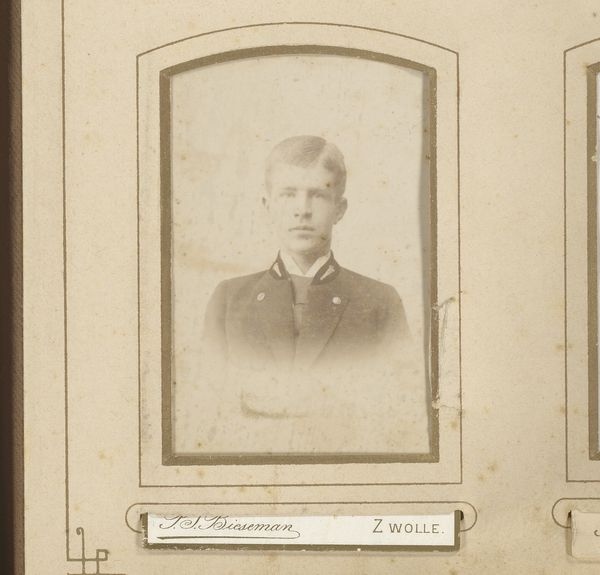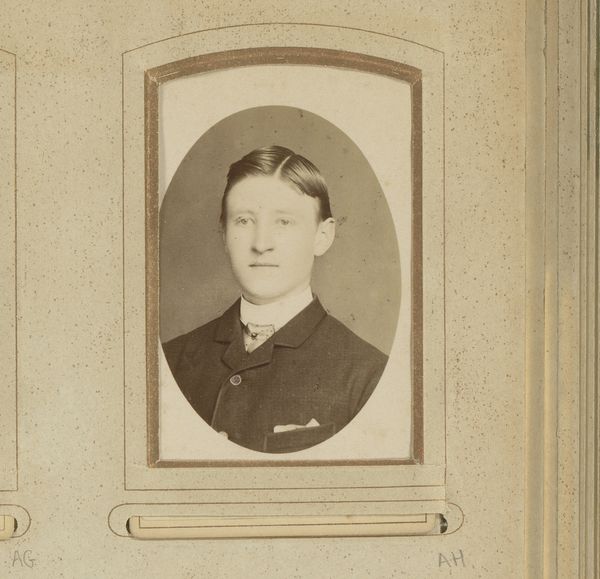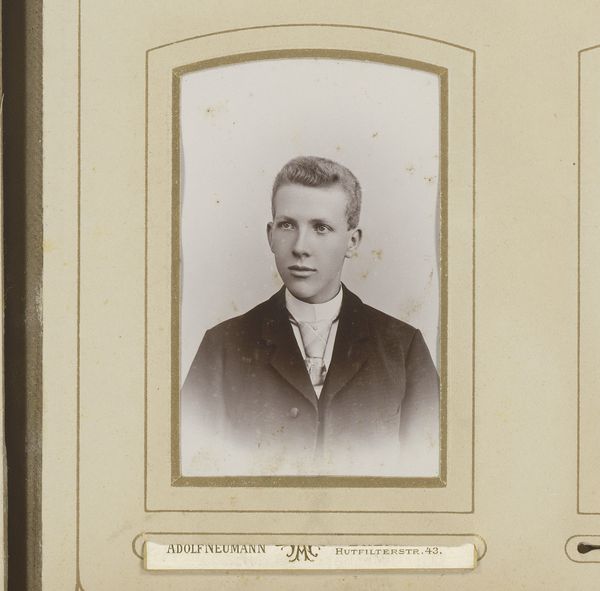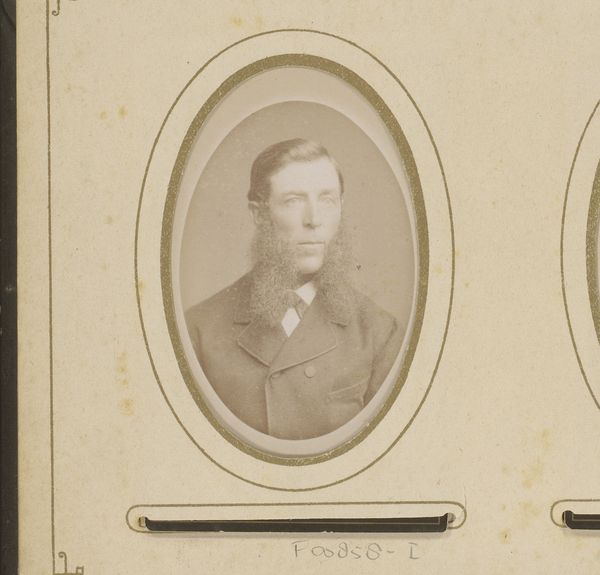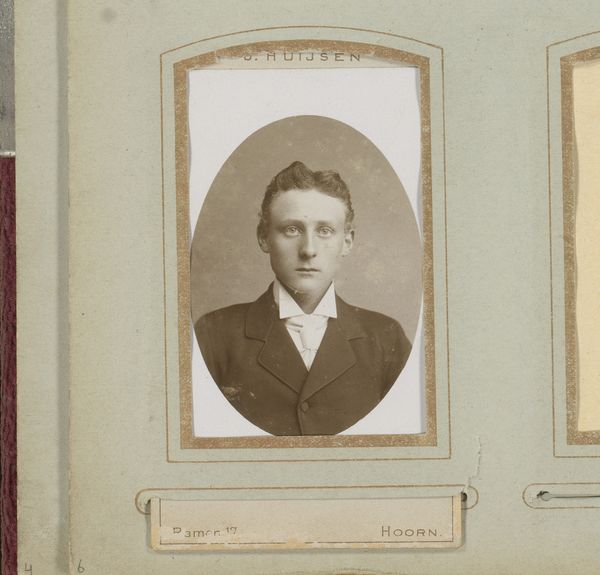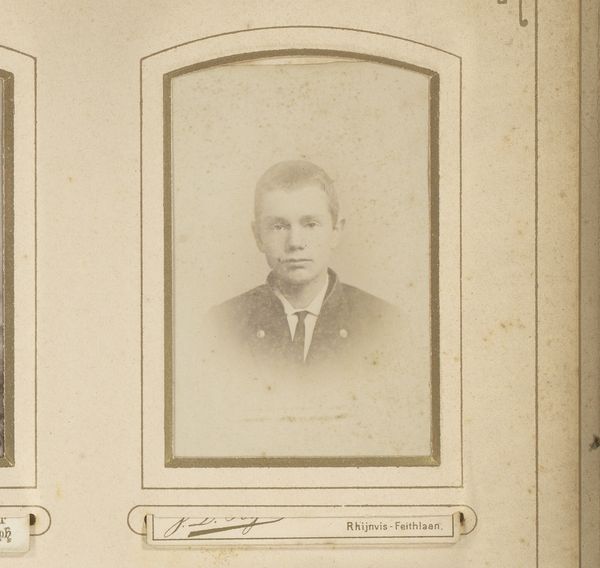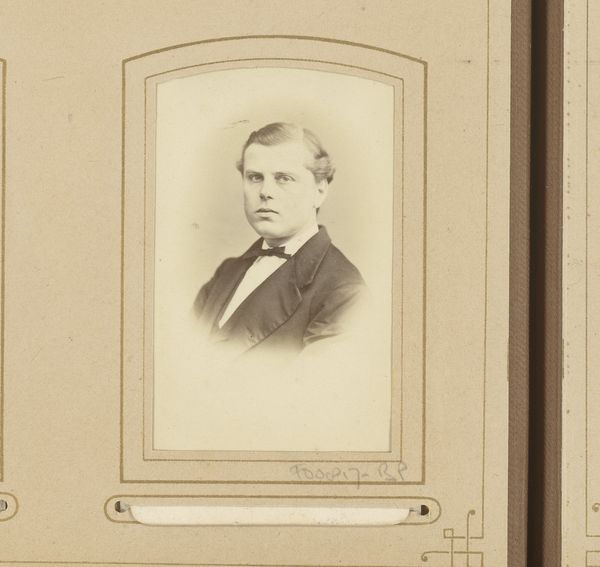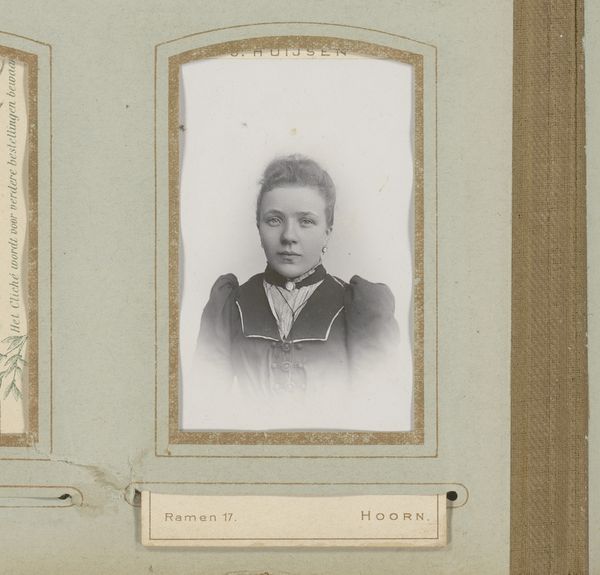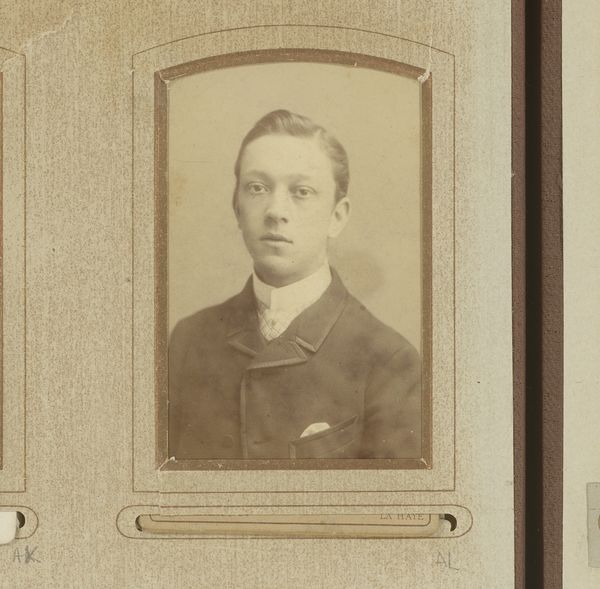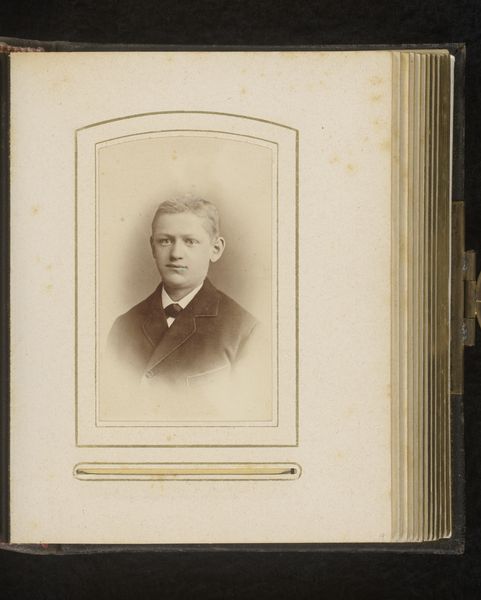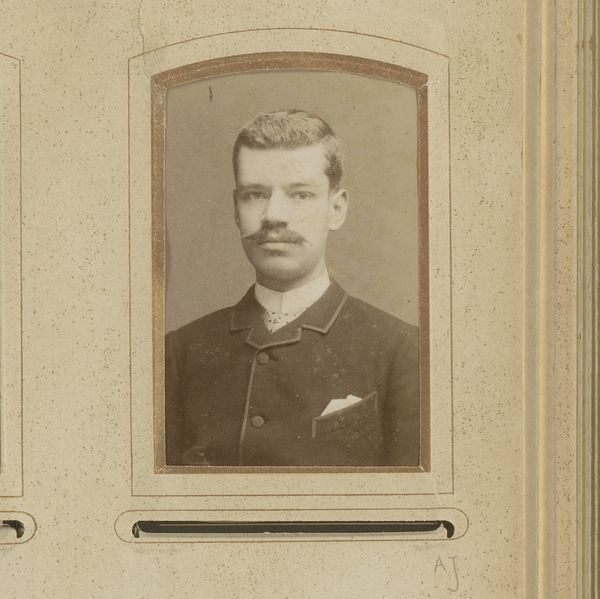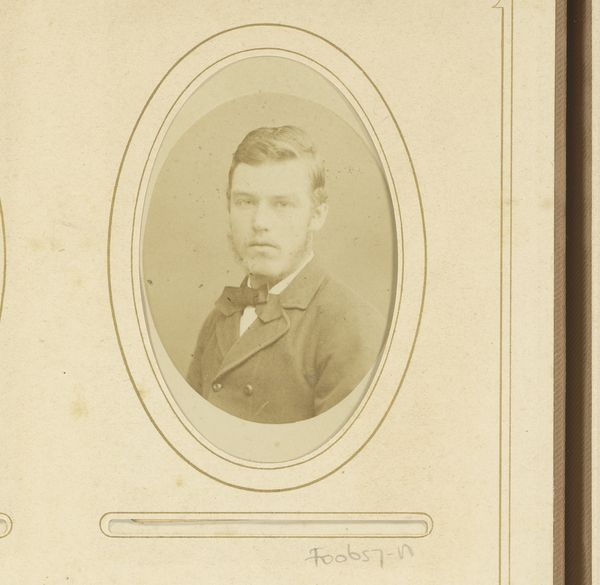
photography, gelatin-silver-print
#
portrait
#
impressionism
#
photography
#
historical photography
#
gelatin-silver-print
Dimensions: height 81 mm, width 52 mm
Copyright: Rijks Museum: Open Domain
Curator: This is a gelatin-silver print entitled "Portret van een jonge man", or "Portrait of a Young Man", created between 1863 and 1901 by Johannes Hendrikus Kramer. What strikes you about it? Editor: A sort of melancholic grace, isn’t it? The young man’s eyes hold a quiet seriousness. It’s like a still life, only instead of fruit, we've got a soul. The sepia tones give it such intimacy, like uncovering a secret. Curator: Exactly. This piece represents a fascinating period in photographic history where portraiture became more accessible to the middle class. Photography studios like Kramer's proliferated, catering to a growing demand for personal mementos. The oval frame was a popular motif for such images, standardizing photographic portraiture. Editor: You know, seeing the sepia wash, I can almost smell old paper and forgotten attics. He looks incredibly ordinary. And this ordinariness, preserved, becomes extraordinary. A time capsule. He might’ve been dreaming about anything. Curator: True, though it’s easy to project onto these old photographs. What’s really compelling is how these studios actively shaped self-representation. There are very deliberate posing, composition, and the choices in clothing, all carefully orchestrated by the photographer to conform with contemporary social norms. Editor: Right. He isn't some freewheeling bohemian. That very proper tie! The suit! Kramer had him posed for posterity, to present the perfect, polite vision. But still, look at those eyes! I fancy there's a rebel yearning to be sprung from the image. Or maybe that’s just me, romanticizing. Curator: It's precisely those details that invite such projection, blurring the boundaries between the objective historical record and our own subjective engagement with the past. It’s why photos such as this remain evocative. Editor: Indeed. I feel honored, almost voyeuristic, to have stolen this glimpse into a past life. Something profound is so very well preserved within those antique hues. Curator: Absolutely. This photograph encourages us to think about the power of imagery in constructing identities, both individual and collective. Editor: Yes, to capture ourselves perfectly, forever—what an odd and enduring aspiration. Thank you.
Comments
No comments
Be the first to comment and join the conversation on the ultimate creative platform.
